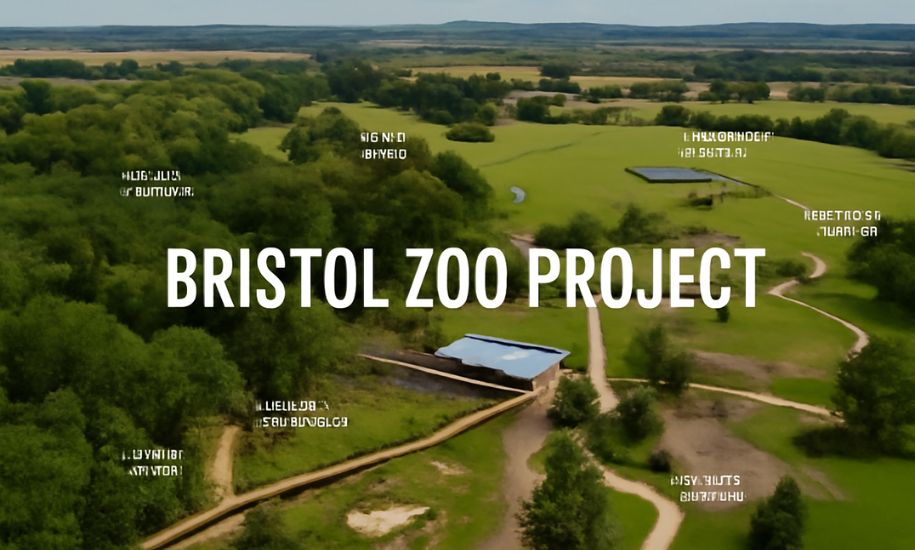The Bristol Zoo Project has quickly become one of the UK’s most exciting wildlife attractions, merging conservation, education, and adventure into a single destination. Located on the edge of Bristol, the zoo sits on over 136 acres of stunning countryside, offering visitors a chance to encounter wild animals in spacious, naturalistic habitats.
Previously known as the Wild Place Project, the park was rebranded in 2023 to reflect its expanded mission as the successor to the historic Bristol Zoo Gardens, which closed its Clifton site after 186 years. Today, the zoo is not just a tourist attraction—it is a hub of global conservation, research, and learning.
Whether you’re planning your first trip or returning for another adventure, this guide covers everything you need to know: tickets, visitor reviews, maps, transport options, and the zoo’s conservation mission.
History and Transformation
For nearly two centuries, Bristol Zoo Gardens was one of the world’s most beloved urban zoos. However, with limited space at its Clifton site, the Bristol Zoological Society made the bold decision to close and relocate. In 2022, Bristol Zoo Gardens closed its gates for the final time, shifting its energy to the larger Wild Place Project site.
By 2023, this evolved into the Bristol Zoo Project, a modern zoo with a focus on immersive, large-scale habitats. Instead of small enclosures, animals are given space to roam in environments designed to mimic their natural homes.
Ticket Information
Standard Tickets
The Bristol Zoo Project offers a variety of ticket options suitable for individuals, families, and groups:
-
Adults: Around £21–£23
-
Children (2–14 years): £17–£18.80
-
Under 2s & Carers: Free
-
Family Saver (2 adults + 2 children): £67–£74
Ticket prices may vary slightly by season, so booking online in advance is always recommended.
Memberships
For those who want to visit multiple times a year, membership offers the best value. Starting from £54 annually, members enjoy unlimited visits, discounts on food and drink, and exclusive previews of new exhibits.
What Your Ticket Supports
Every ticket sold supports wildlife conservation projects in 10 countries. From protecting lemurs in Madagascar to breeding endangered birds like the Socorro dove, your visit directly funds critical initiatives.
Reviews: What Visitors Are Saying
The reviews for Bristol Zoo Project are overwhelmingly positive, highlighting both the family-friendly atmosphere and the zoo’s emphasis on conservation.
-
TripAdvisor visitors frequently describe it as a “brilliant day out for families,” with particular praise for the Bear Wood experience and the Lemur Walkthrough.
-
Bloggers and travel writers call it “educational, adventurous, and deeply inspiring,” noting that the zoo strikes the right balance between fun and purpose.
-
Families often point out the large open spaces, perfect for children to explore, alongside accessible facilities like cafes, picnic areas, and play zones.
Some reviews do note that, unlike the Clifton site, the zoo requires more walking due to its larger layout. For many, though, this makes the experience feel more natural and immersive.
The Bristol Zoo Project Map: Key Highlights
A glance at the official Bristol Zoo Project map reveals just how much there is to see across its sprawling grounds. Here are some of the most popular zones:
-
Bear Wood – Step back in time and walk among brown bears, wolves, lynxes, and wolverines in a recreated ancient British woodland.
-
Gelada Rocks – Home to the world’s only troop of gelada baboons in the UK.
-
Lemur Walkthrough – A free-roaming exhibit where lemurs leap across branches overhead.
-
Giraffe House – Towering giraffes graze across savannah-style enclosures.
-
Butterfly Maze – A family-friendly attraction filled with vibrant butterflies.
-
Tower Meadow – Ideal for picnics and play, with scenic views of the countryside.
-
Future Plans – The upcoming Central African Forest habitat will bring gorillas and crocodiles into immersive woodland environments.
The map also highlights essential facilities such as restrooms, cafes, playgrounds, and bike racks for those arriving on two wheels.
How to Get to Bristol Zoo Project
By Car
The zoo is located at Blackhorse Hill, Easter Compton, BS10 7TP, just minutes from Junction 17 of the M5.
-
From central Bristol, the journey is about 6 miles (10–15 minutes).
-
Parking is available on-site.
By Bus
Several local bus routes connect Bristol city centre and nearby towns to the zoo. The Line 1 bus runs from Clifton Down to Cavendish Way in around 28 minutes, while other services take closer to an hour.
By Bike
Cycling is a sustainable and enjoyable option. The site is connected to National Cycle Route 4, and bike racks (including e-bike stations) are available at the entrance.
By Train
The nearest major train station is Bristol Parkway, about a 15-minute taxi or bus ride away.
Visitor Experience
The zoo is designed for both relaxation and exploration:
-
Food & Drink: Options range from freshly baked pizzas and sandwiches to classic café offerings. Visitors are also welcome to bring their own food and enjoy picnics in scenic areas like Tower Meadow.
-
Family-Friendly Facilities: Playgrounds and learning centres keep children engaged throughout the day.
-
Accessibility: The zoo provides wheelchair-friendly paths, accessible toilets, and carer-free entry to ensure inclusivity.
Wildlife and Conservation
The zoo is home to over 25 species, including giraffes, cheetahs, bears, wolves, lynxes, red pandas, and exotic birds. Unlike traditional zoos, enclosures are designed to replicate wild habitats, providing enrichment for the animals and an educational experience for visitors.
The Bristol Zoological Society continues to run international projects across Africa, South America, and Asia. Highlights include:
-
Saving the blue-eyed black lemur in Madagascar.
-
Breeding endangered amphibians and reptiles.
-
Running the Access to Nature programme, which brings over 1,400 school and community groups into the zoo every year.
Future Developments
The most exciting part of the Bristol Zoo Project is its ambitious masterplan for expansion. Upcoming features include:
-
Central African Forest Habitat: An immersive space for gorillas, crocodiles, and forest-dwelling species.
-
Conservation Breeding Centre: New facilities for amphibians, reptiles, and rare birds.
-
Learning & Medicine Centre: A state-of-the-art hub for education and wildlife health.
These developments aim to create one of Europe’s leading conservation zoos, firmly establishing Bristol as a centre of global wildlife protection.
Why Visit the Bristol Zoo Project?
Unlike many traditional zoos, the Bristol Zoo Project is about more than entertainment. It’s an opportunity to support global conservation, learn about endangered wildlife, and inspire future generations to protect the natural world.
For families, it’s a full day of fun, packed with interactive exhibits, play areas, and animal encounters. For animal lovers, it’s a chance to see unique species like gelada baboons or red pandas in carefully designed habitats. And for conservationists, it’s a reassurance that every ticket contributes to protecting wildlife worldwide.
Final Thoughts
The Bristol Zoo Project is not only one of the UK’s best family attractions but also a model for how modern zoos can balance visitor enjoyment with serious conservation goals. From its spacious design and immersive exhibits to its global conservation projects, the zoo is more than worth the visit.
So, whether you’re exploring Bear Wood, marveling at the giraffes, or joining a conservation talk, your day will be memorable and meaningful. And don’t forget, every ticket purchased helps save species around the world.
For more travel guides, tips, and detailed reviews, visit Digital Zine Travel, where we bring you the latest in lifestyle, travel, and family-friendly adventures.

